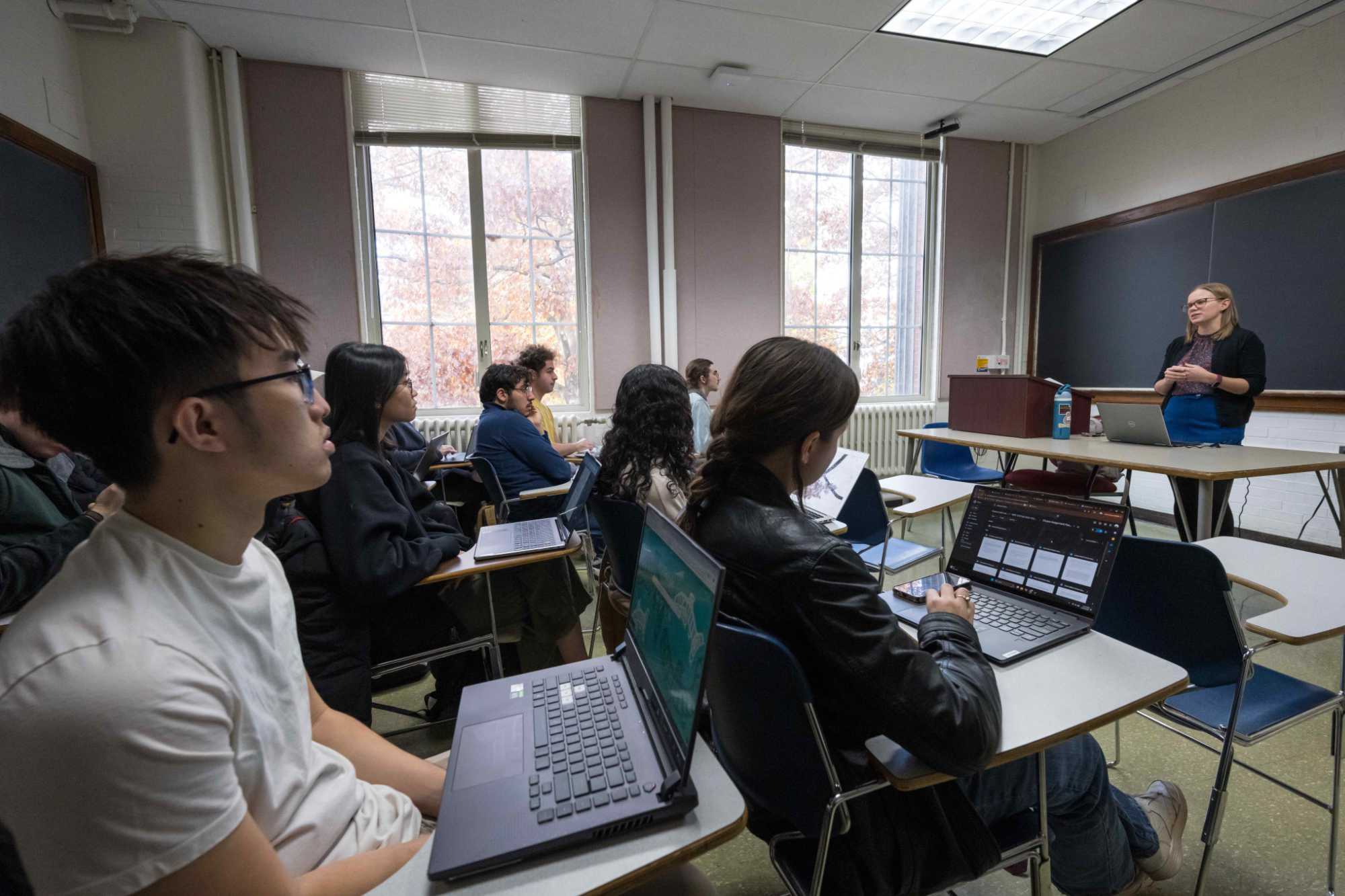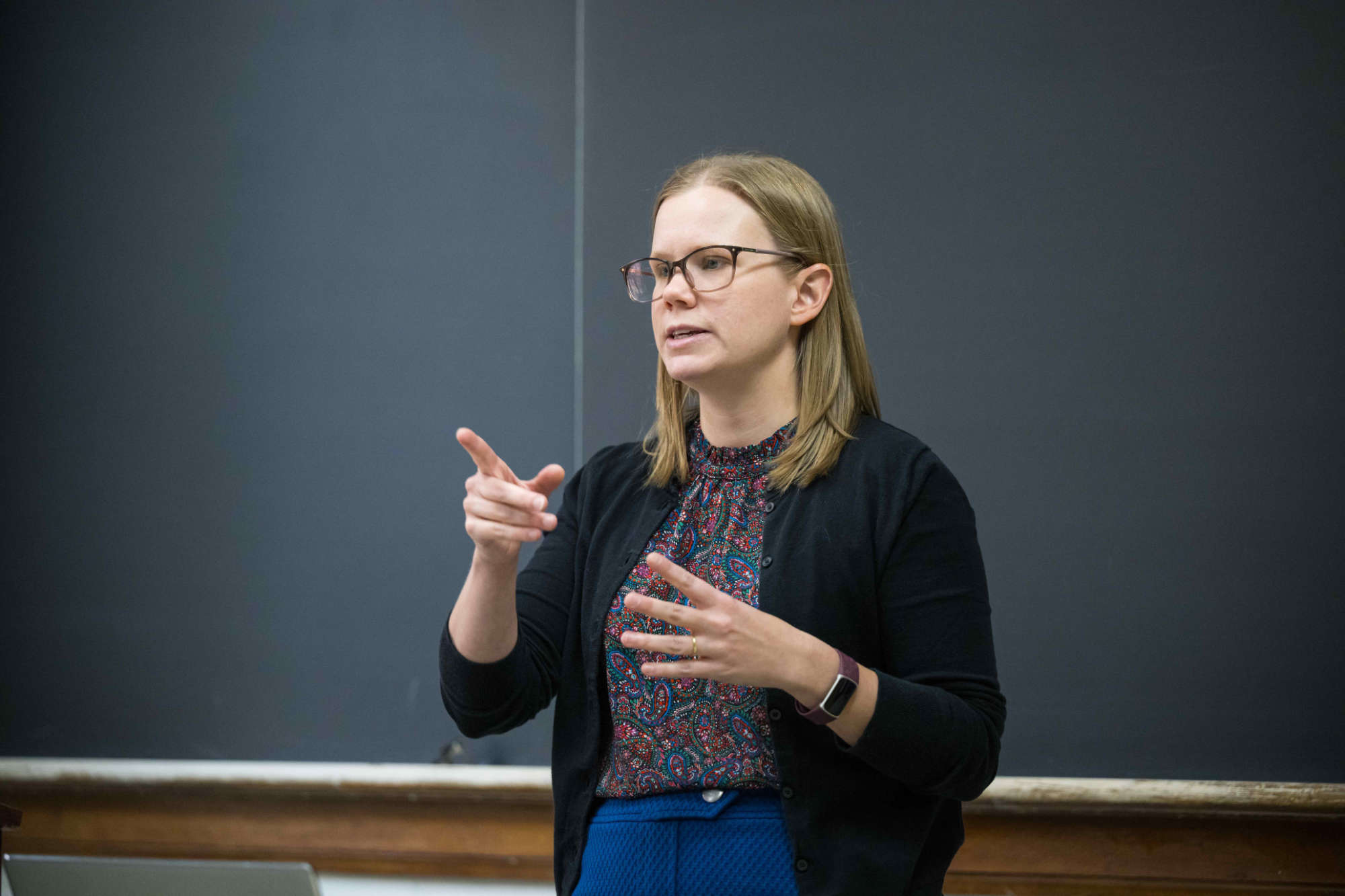Amy Arbogast â16 (PhD) offers six tips for helping people find their voice.
Amy Arbogast â16 (PhD) says sheâs âalways been a talker,â so forging a career in public speaking was a natural fit.
âI was terrible at every sport in high school, so I joined the speech team,â says Arbogast, an associate professor in the University of RochesterâsĚý (WSAP). âThe coach couldnât coach my senior year, so I stepped in. Thatâs when I discovered my passion. I loved helping students find their voice and figure out what they wanted to say and how they wanted to say it.â
Arbogast came to Rochester in 2009 to begin a PhD in American history. She joined the WSAP staff and in 2013 created the , where she remains its coordinator and teaches writing and public speaking classes. Arbogast and former fellow Maria Sepulveda â18, â23S (MBA) also run their own private consultancy, , which offers public speaking tips, consulting, and coaching.
Arbogast is writing a guidebook to class presentations for undergraduates in the humanities that will be published by the , but she says people from all walks of life can benefit from polishing their speaking skills.
âIn nearly every job, people do things that require public speaking skills every day,â she says. âYou meet with clients, lead meetings, have critical conversations with supervisors and colleagues, and deliver short presentations to your team or manager. Everyone needs to know how to communicate their ideas effectively and build meaningful connections with the people theyâre talking to.â
Arbogast offers this advice for anyone who wants to master the art of public speaking.

Know your audience!
âSpeakers often focus on what they want to say, but great speakers focus on their audience. What do you want them to know? What do they already know? What kinds of language or jargon will be familiar to themâand what will make them feel left out? Choose wisely.â
Be yourself.Ěý
âAudiences arenât interested in seeing you play a character or pretend to be something youâre not. The most compelling speakers pull us in because we feel like weâre seeing their true selves. Authenticity builds trust and a connection with your audience.â
Find your perfect pace.Ěý
âWe often talk fast because we know our material and are excited about it. But for audiences hearing that material for the first time, our fast pace makes it impossible to keep up. Practice slowing down just enough that it annoys you, and youâre probably in the sweet spot.â

Work up to eye contact.
âIf eye contact makes you nervous, pick out four friendly faces in the audienceâpreferably in different quadrantsâand start by focusing just on them. After your nerves settle, you can expand to the rest of the audience.â
Focus on getting started.
âThe first part of your speech might be nerve-wracking, but once your cortisol levels even out, youâll find your footing. Practice your opening lines and trust yourself to build momentum, energy, and confidence.â
Practice, practice, practice!
âA speech gets better every time you read it, even if you donât make changes. Practice is the single most useful thing you can do to make a speech better and help yourself grow as a speaker. It makes you become comfortable with your material and dynamic with your delivery.â





